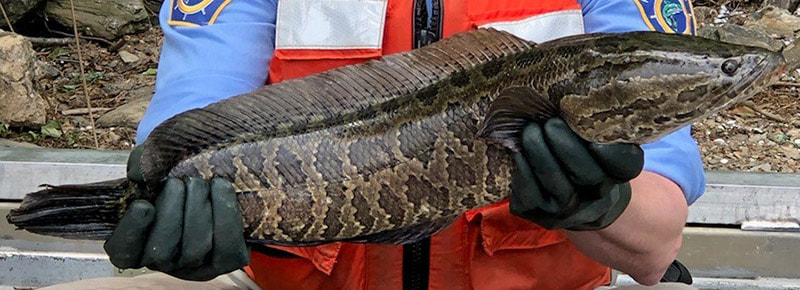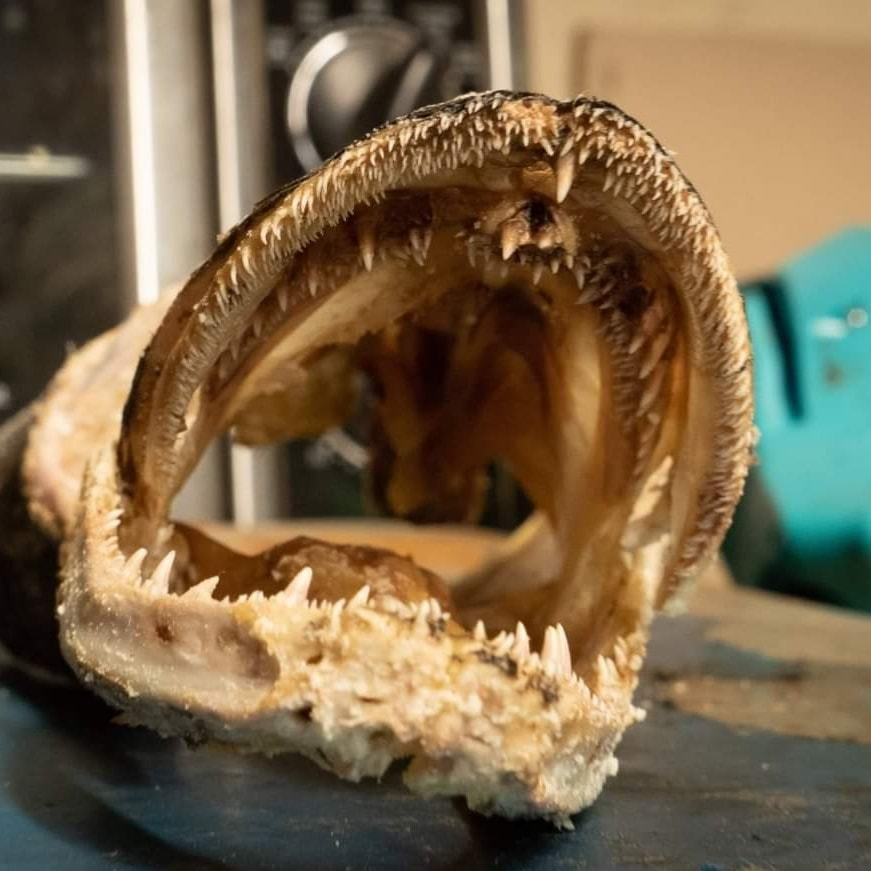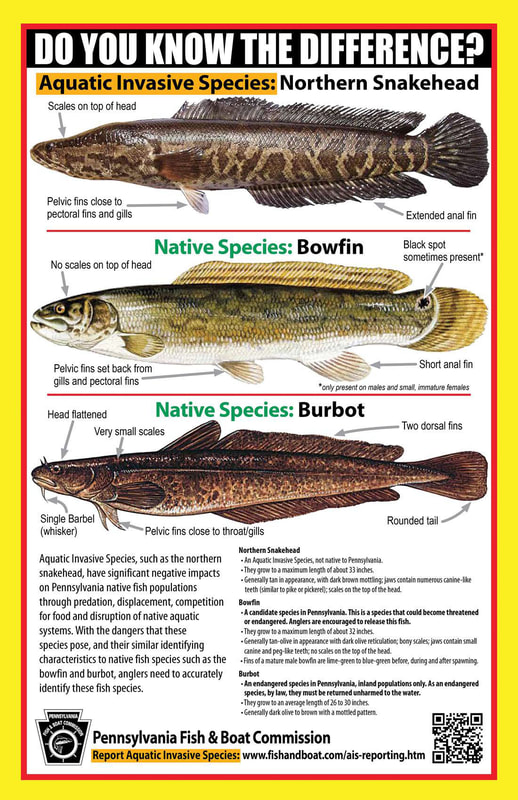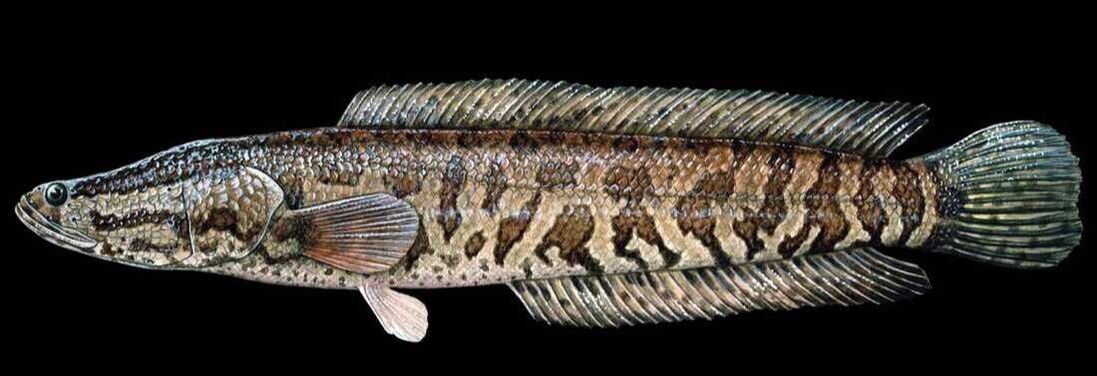|
In response to a poster challenge by the Middle Susquehanna Riverkeeper Association heading into Earth Day, 8-year-old Liam Crames, of Selinsgrove, put crayon to paper to educate others about the threat of snakehead fish. “I first learned about them on ‘River Monsters’ (television show). Then I learned more about them on random internet sites,” he said. “I hate them because they are invasive, they kill other fish too much and they’re bad for the river.”
Hartzell admitted that a virus that impacts largemouth bass is also associated with the snakehead. “There is a virus that caused issues in largemouth bass in the early 2010s. It caused the bass to be lethargic, created sores and was a pretty big detriment to the bass population,” Hartzell said. “Snakeheads can be carriers for this virus. Their impact is a double whammy – they effect competition within a waterway, but also can bring disease.” Fortunately, Hartzell added, the greater Susquehanna does not have many records – yet – of snakeheads, which are a much bigger issue in the southeastern part of the state in and around the Delaware River watershed. “The area from Philly to Reading is a hotspot, but when it comes to the Susquehanna, most reports are below the Conowingo Dam,” he said. “During operations last year, some snakeheads made it through the fish lifts at the Conowingo – we estimate around 15 to 20 breached the dam and made it upriver. Through electrofishing and trying to intercept them, we were able to take out most of those fish, but a few were not accounted for.” Snakeheads have become a popular sport fish in Maryland and other stretches where they are abundant, based on their size, the fight in landing them and, for some anglers, the quality of meat they provide. This popularity is leading some to illegally “stock” snakeheads in places they don’t already exist. “Last year, several records came out of Lake Redmond in York County, and obviously snakeheads wouldn’t get there without someone putting them there,” said Hartzell. “This is a concern for all of our waterways, and one of the reasons we have strict regulations in place.” Among those regulations:
Proper identification is key in making sure a fish you find is a snakehead before taking any next steps, according to Hartzell. “They are pretty distinct from most of our native species. One noticeable characteristic is the anal fin on the bottom of their body. Most of the wild fish species in Pennsylvania have a short anal fin, like on bass and musky,” he said. “Snakehead anal fins span from the mid-length of their body to the tail, looking almost eel-like.” Snakeheads also are known for their big mouths with many teeth and a dark striped pattern on their bodies. There are two native fish species that do have some resemblance to snakeheads, but both are fairly rare. “The burbot is considered endangered. There really aren’t populations in the upper Susquehanna region, but they do have a similar anal fin and overall fin positioning over their body,” said Hartzell. “However, burbots have whiskers where snakeheads do not.” The other species that can be mistaken for a snakehead is the bowfin, which has been considered a species of special concern based on its rarity, but populations have recently been rebounding. “They look very prehistoric, like the snakehead, but they lack the anal fin,” Hartzell said. Snakeheads are a diverse species, with the northern snakehead most common in the eastern United States, but other species found in the southern states and an approximate 25-30 species located in Asia. Radio transmitters have shown that snakeheads can travel several kilometers a day, which adds to the concern about their spread throughout the Susquehanna in the future. In addition, rumors that snakeheads can “walk on land” are rooted in a certain level of truth, Hartzell admitted. “Unlike other fish species in our state, snakeheads can breathe out of water. While swimming, they are known to come up for air, and can survive out of water for a couple hours if they remain moist,” he said. “We have heard reports of them crawling along the land using their fins, and there is a certain amount of capability for that, although they likely aren’t going very far.” Considering the long list of potential threats they pose to our aquatic ecosystems, the Fish and Boat Commission urges anyone who catches or comes across a snakehead to immediately kill it. “We definitely don’t want you to release it back into the water,” he said. “Obviously, be confident of its ID before killing it, but if it is a snakehead and you do kill it, we ask that you dispose of it properly. Don’t leave the carcass at the site, but put it in a Dumpster or the trash – or take it home and eat it. I’ve heard it tastes like cod.” Hartzell added that the commission would also like people to report snakehead sightings. “Get some pictures of the fish and submit it to the Pennsylvania Fish and Boat Commission,” he said. “We need to know where people are catching them, we want to keep our eyes on any new potential locations so we can post signs there and monitor things to discourage any additional spread.” The Middle Susquehanna Riverkeeper Association is encouraging anglers to incorporate any snakehead catches into our Water Reporter app data collection project. The app, similar to Instagram, allows people to report findings from our waterways, and results are immediate pulled into an interactive map on the MiddleSusquehannaRiverkeeper.org website’s “Report a Concern” page.
2 Comments
3/3/2024 01:54:40 pm
Gratitude for the insightful share! Come visit our website for expert irrigation repair solutions!
Reply
Leave a Reply. |
AuthorsRiverkeeper John Zaktansky is an award-winning journalist and avid promoter of the outdoors who loves camping, kayaking, fishing and hunting with the family. Archives
July 2024
Topics |
||||||||||






 RSS Feed
RSS Feed